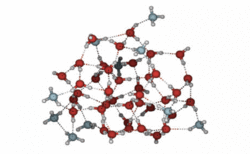Dynamics in clusters
Cluster dynamics - a step towards complexity

Photoinduced processes in complex systems can be modeled as a sequence of events initiated by the absorption of a photon. Photoionization of an atomic electron is followed by electronic relaxation which results in a migration of charge within the atom. The need to understand how this initial event leads to higher ionization states and dynamic effects in complex systems such as biomolecules or nanostructured materials is motivated by biological processes and by possible light-harvesting applications. The extreme complexity in understanding the series of sequential events lies in the interplay between electrons and ions especially when the times scales are similar. This phenomenon, called the break down of the “Born-Oppenheimer” approximation, is surprisingly common for large molecules and its investigation is one of the great challenges of this century.
Weakly bound, atomic and molecular, clusters have been the subject of many studies to investigate structures, dynamics and energetics of nano-scale objects, with the goal to understand the evolution of their properties from isolated atoms to the bulk solid. The ability to tailor them in large variety of ways, for example size, geometry, chemical environment..., make these clusters ideal as model systems to understand how the primary sequence of processes is affected by surrounding atoms or molecules.
Collaborators at Lund University
Maxim Tchaplyguine
Noelle Walsh
